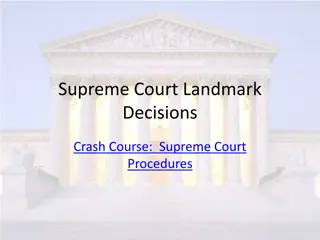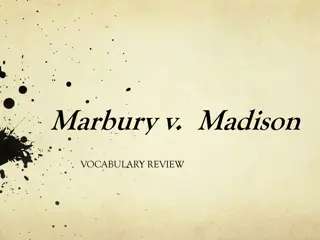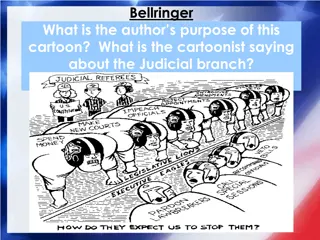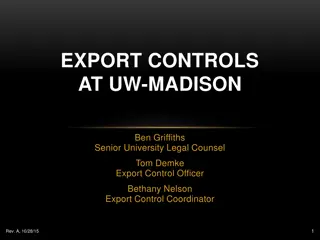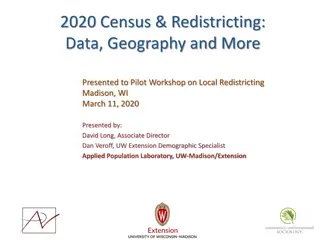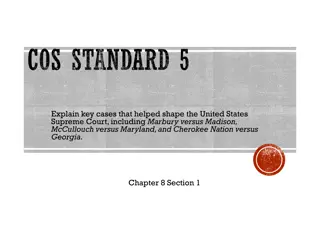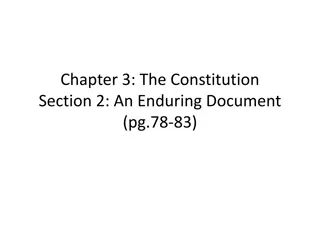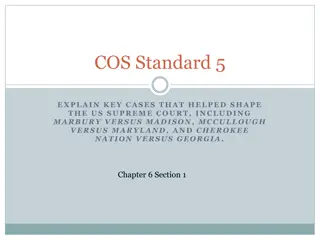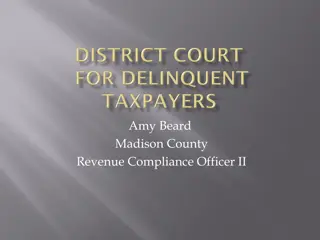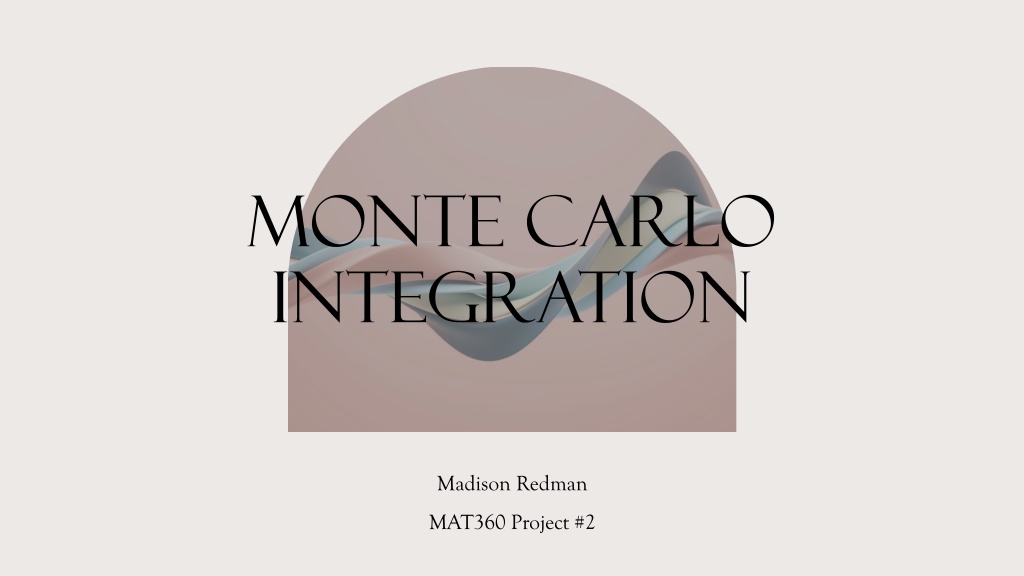
Understanding Monte Carlo Integration: Techniques and Applications
Explore the history and techniques of Monte Carlo integration, including its applications in various disciplines such as computational science, statistics, and engineering. Learn about the specific methods, interesting discoveries, and the code involved in Monte Carlo integration.
Download Presentation

Please find below an Image/Link to download the presentation.
The content on the website is provided AS IS for your information and personal use only. It may not be sold, licensed, or shared on other websites without obtaining consent from the author. Download presentation by click this link. If you encounter any issues during the download, it is possible that the publisher has removed the file from their server.
E N D
Presentation Transcript
Monte Carlo Integration Madison Redman MAT360 Project #2
History of Monte carlo methods o Developed and formalized by notable Math and Science figures Fermi, Ulam, von Neumann, Metropolis, and others o The Manhattan Project and the Atomic Bomb o Used to study the probabilistic behavior of neutron transport in fissile materials o Started in nuclear physics o Now used in many different disciplines o Computational science o Statistics o Computer graphics o Engineering
Overview of Monte carlo methods o Random or stochastic sampling o Law of Large Numbers o Monte Carlo Simulation o Hit or Miss Monte Carlo Method o Monte Carlo Integration o Technique of estimating or averaging using random samples
Specifically: crude Monte carlo Integration ? ? ?(?) ? ? ? ?(??) ? ?=0 ? for some n = number of points (nodes) And points are randomly selected using uniform distribution
More on Mc integration o Converges with order O( ?) o Accelerated Convergence o Quasi-MC Int. converges with order O((log(?))?1 ?) o Importance Sampling, cuts error in half o Actually, fairly slow to converge o But, independent of dimension, so preferable for higher-dimension problems
Interesting discoveries ??(?) ? ? ? Two points, end points: ? 2[? ? + ?(?)] 2[? ?0 + ?(?0+ )] Very big generalization, chances are very slim that a and b are randomly selected BUT, looks like the Trapezoid Rule!! ?0+2 ?(?) ? And, look at Simpson s Rule: ?0 3[? ?0 + 4? ?0+ + ?(?0+ 2 )] Again, looks very similar!
A little bit of code o Uniform distribution function o Random Sampling o Different result each time
So, very slow to converge BUT, preferable for high-dimension evaluations An overlook on mc integration Used in many different fields Especially: Computer graphics Nuclear physics Engineering
Bibliography https://cs.dartmouth.edu/~wjarosz/publications/dissertation/appendixA.pdf https://towardsdatascience.com/the-basics-of-monte-carlo-integration-5fe16b40482d https://www.scratchapixel.com/lessons/mathematics-physics-for-computer-graphics/monte-carlo- methods-mathematical-foundations/quick-introduction-to-monte-carlo-methods.html https://www.math.pku.edu.cn/teachers/litj/notes/numer_anal/MCQMC_Caflisch.pdf https://towardsdatascience.com/the-basics-of-monte-carlo-integration-5fe16b40482d https://docs.octave.org/v4.2.2/Random-Number-Generation.html








